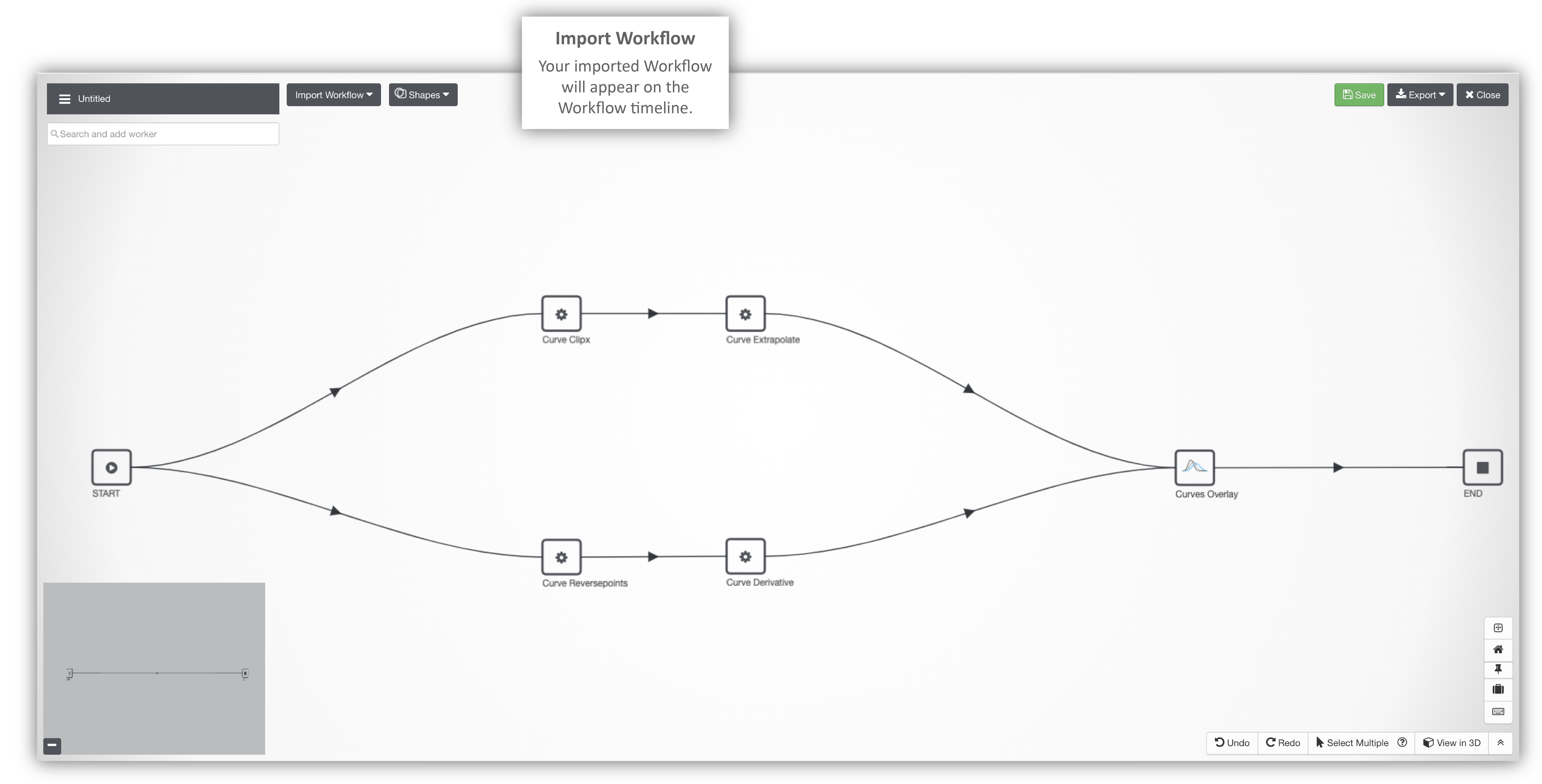
3.  Importing Data¶
Importing Data¶
In this section, we’ll go over ways we import and add data into our workflow for successful execution.
3.1. START Worker Configuration¶
Click on the START worker to configure it.
Click on Start Worker
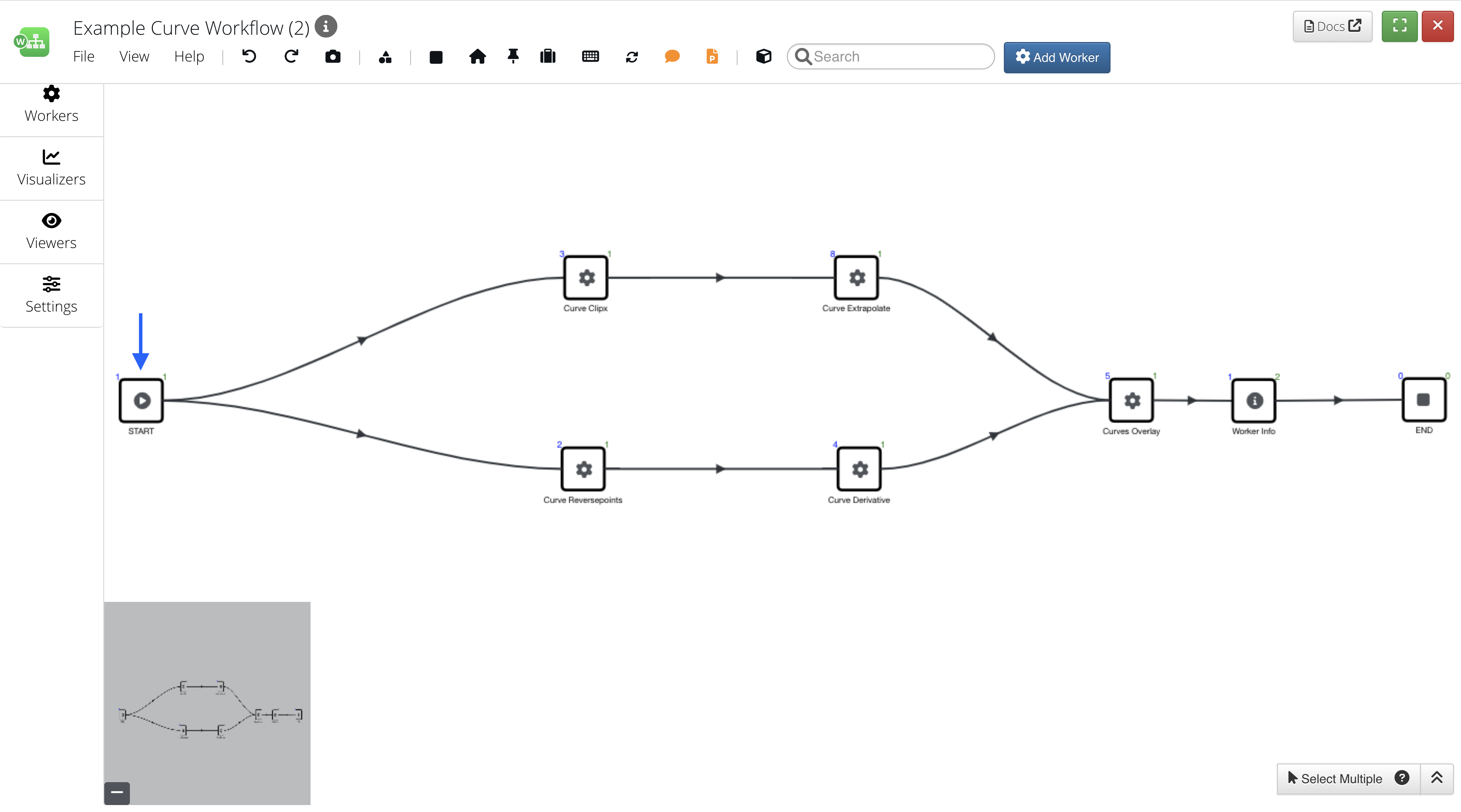
Drag-and-drop inputs from the left onto the form-builder.
Drag-and-drop Inputs
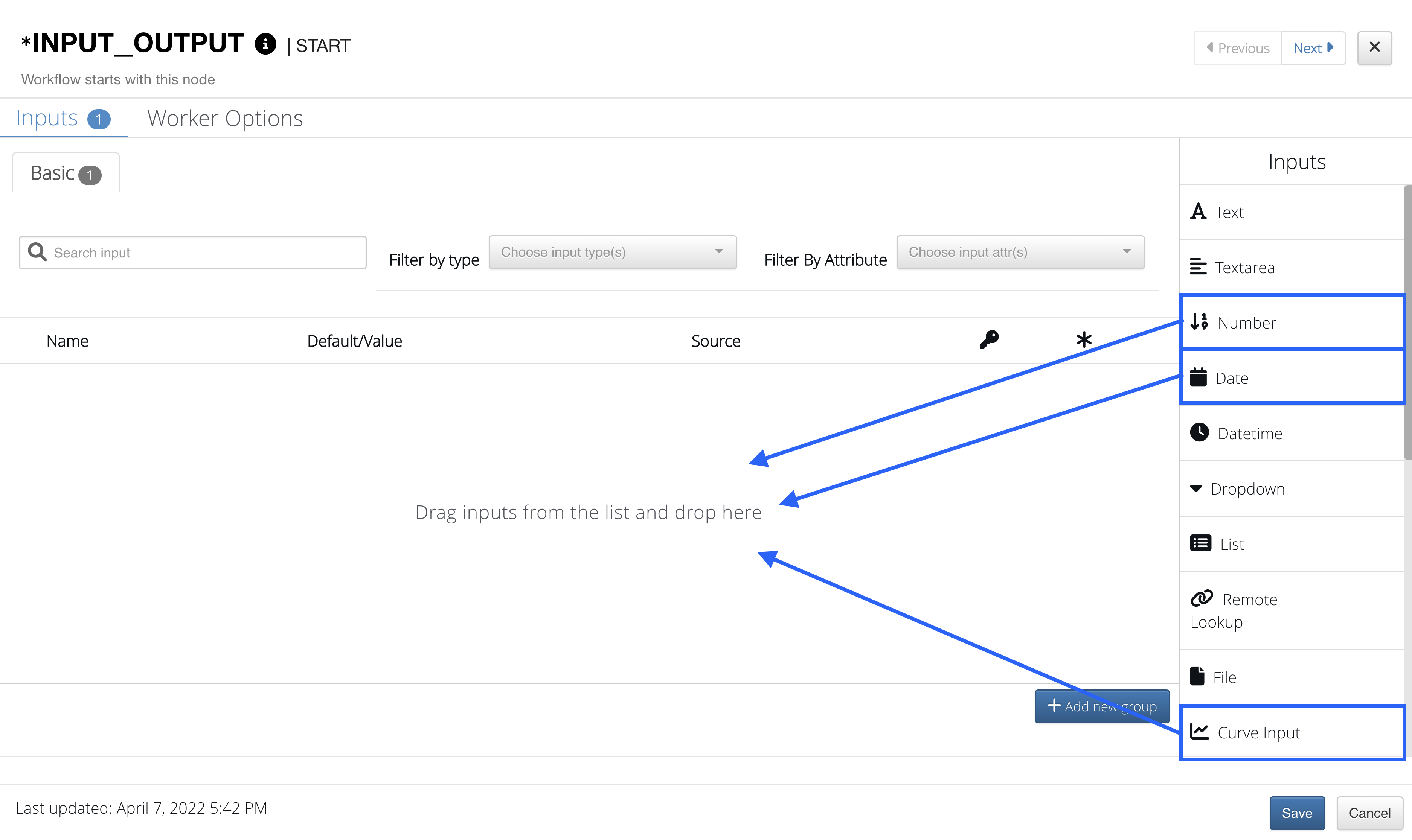
Then, add data for each input manually, using sample data or uploading local files.
Add Input Data
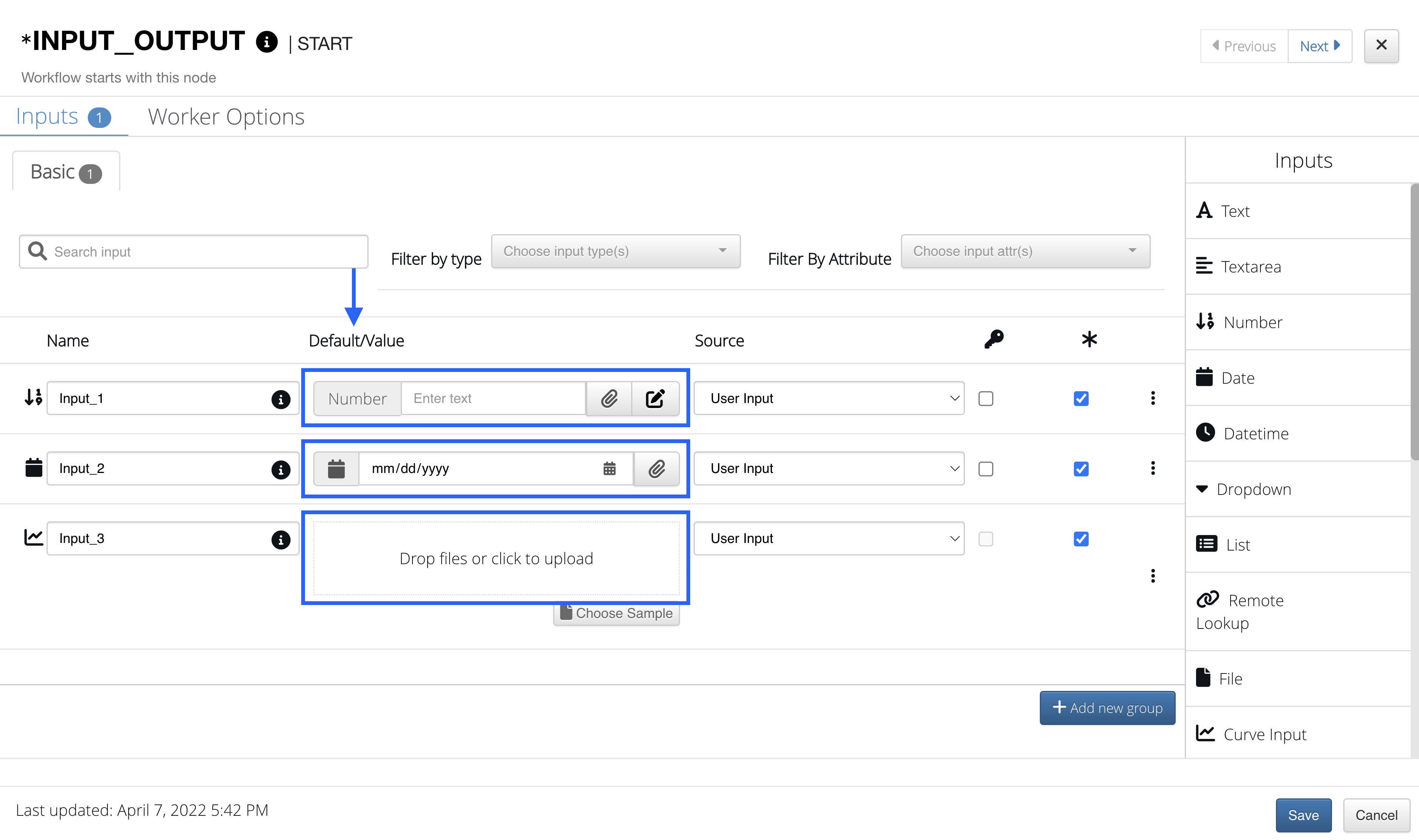
NEW as of Jan 25, 2022: By default, inputs added in different groups are now available in All inputs tab of Start worker. Number of inputs in each tab of Start worker are now specified.
All Inputs Tab and Input Counts
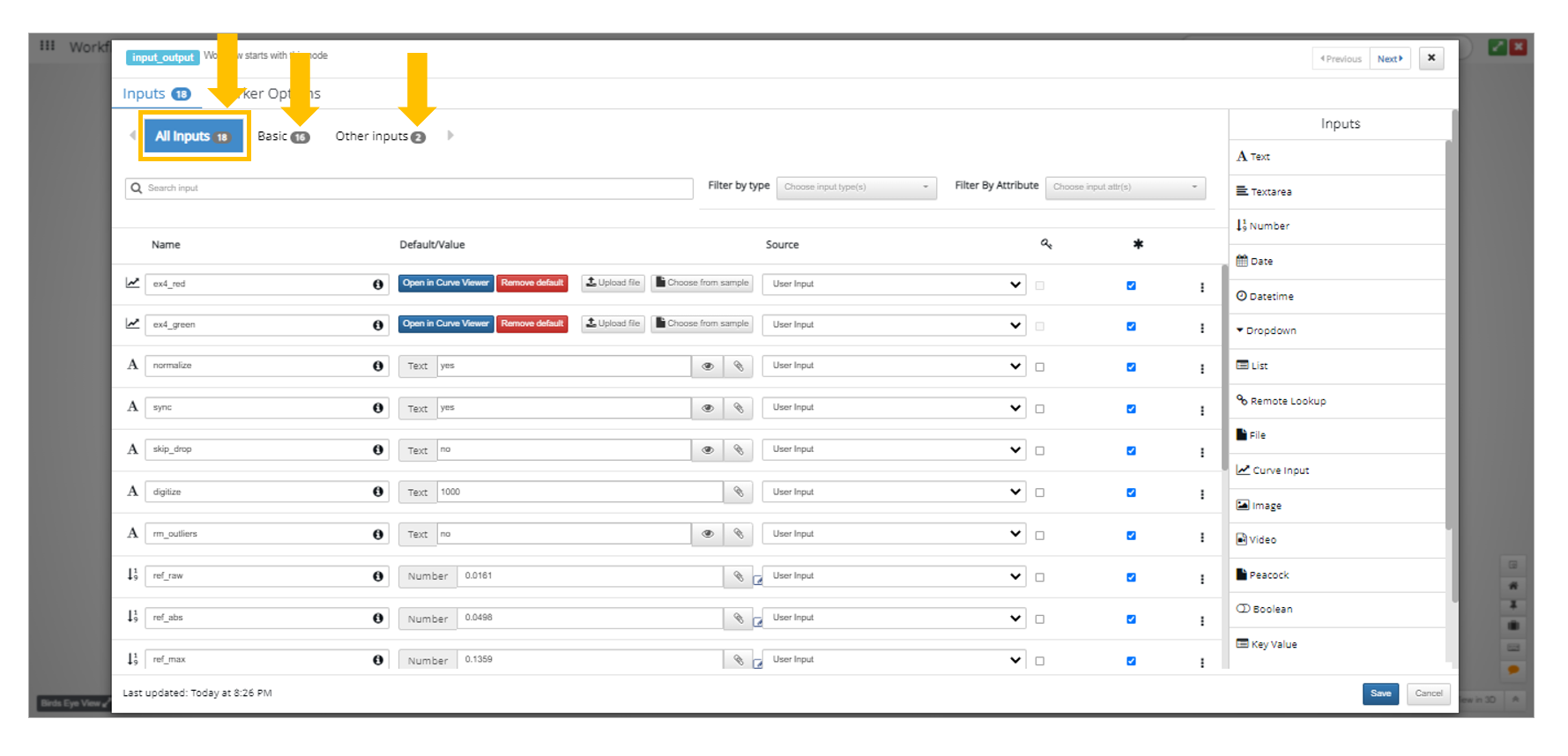
Also NEW as of Jan 25, 2022: You can now right-click on the tab to remove with no inputs. You can also search for inputs in a search bar or add filtered drop-downs in the Start worker.
Auto Remove Tabs, Search Inputs and Filter Drop-downs
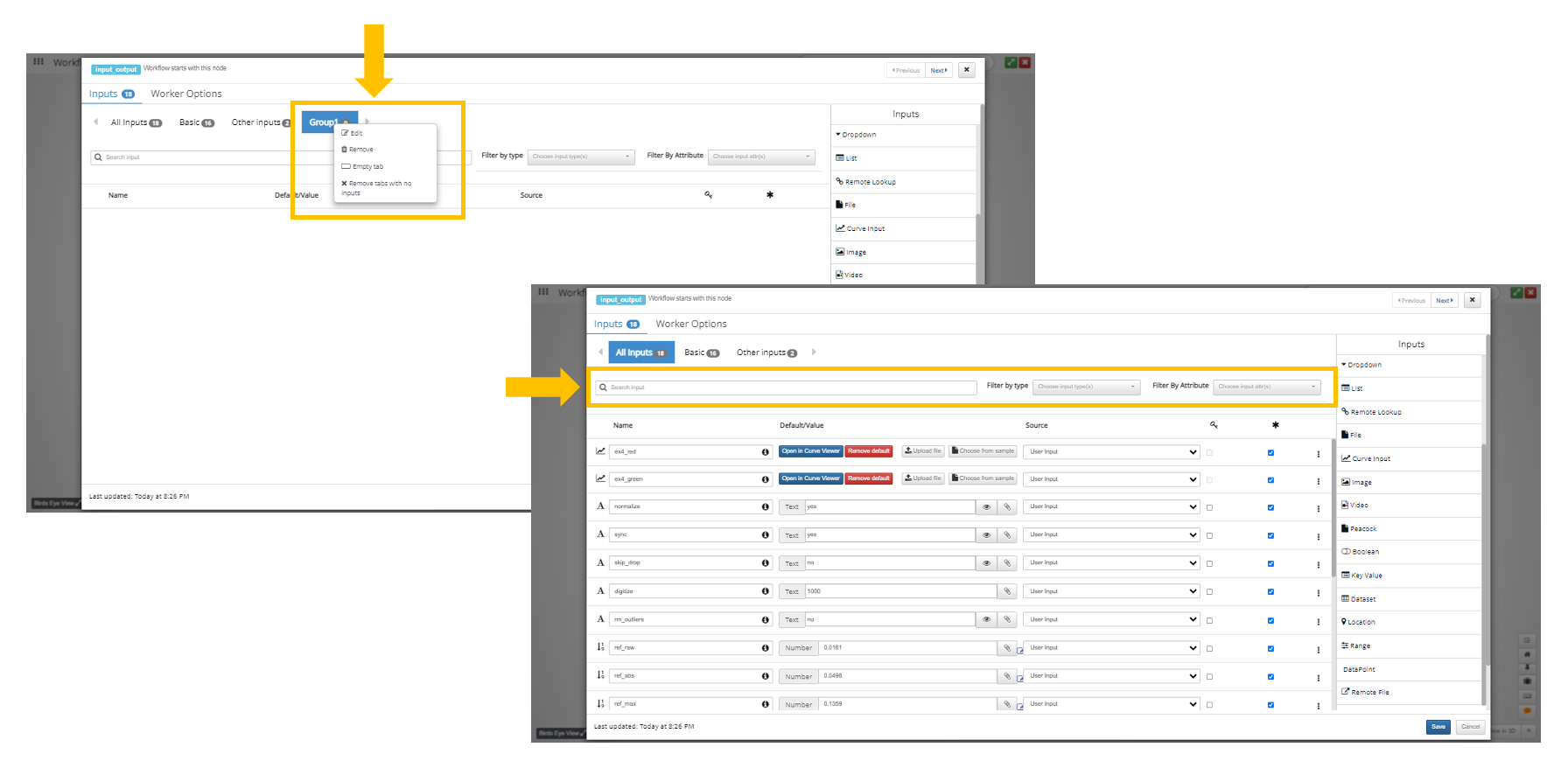
3.2. Using Sample Data¶
Workflows has built-in sample data for curve inputs for learning and testing purposes. We can find this option anytime we have a curve input either in the START worker or a curve worker configuration.
Add Sample in START Worker¶
Under the START worker, we can drag-and-drop a curve input into the form-builder. Then, we’ll click on “Choose Sample” to add from the an excel of sample curves.
START Worker Choose Sample Data
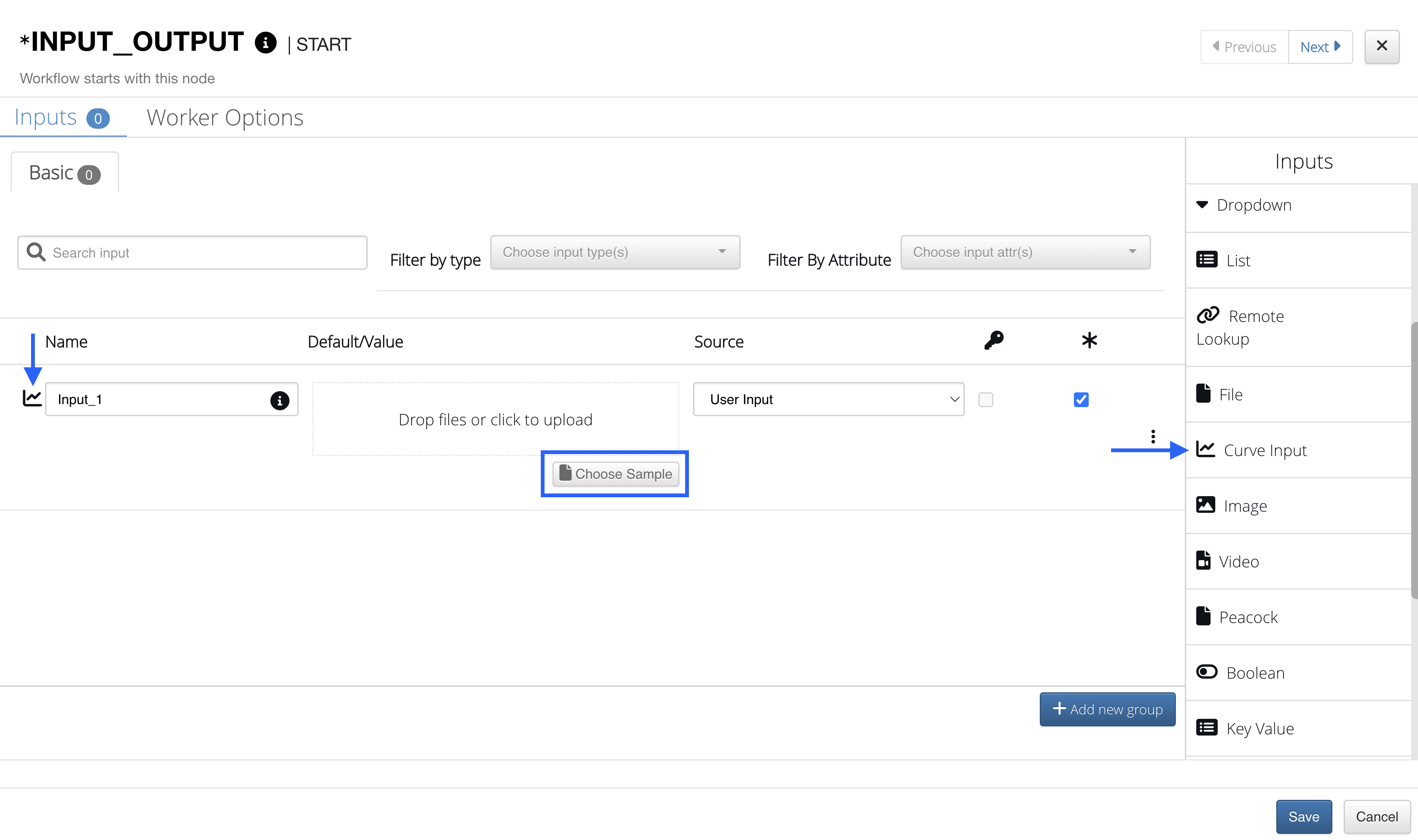
Here, we can sift through the sheets for a particular type of curve. Double click the stop of a column to add as an x-range, and do the same for the y-range. In this example, we’ve chosen the first cell temperature curve in the general sheet.
Choose X and Y Range in Excel Viewer
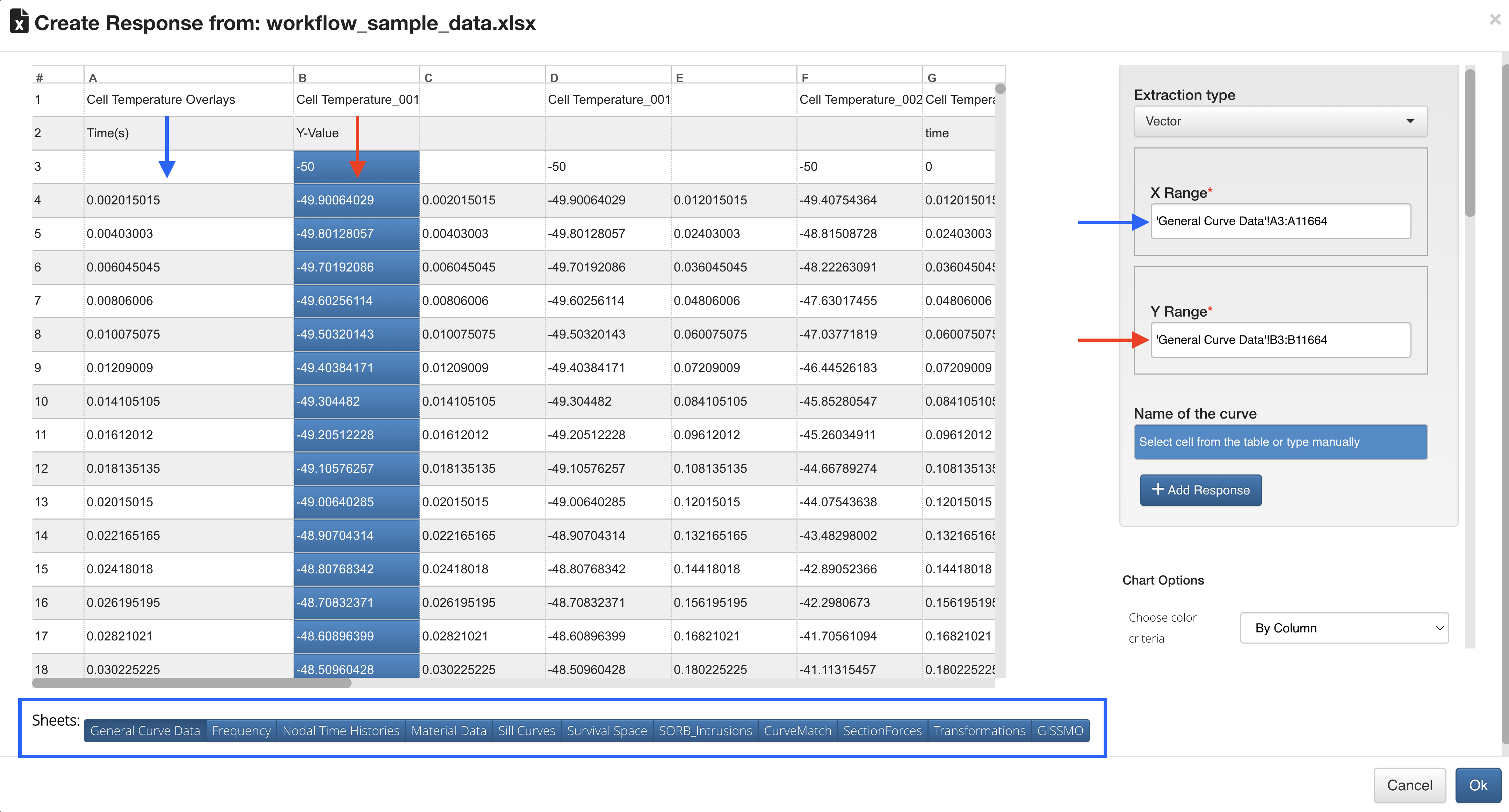
Add Sample in Curve Worker¶
Adding sample data to a curve worker requires us to add it to the canvas and open it for configuration. Learn how to do that under Building and Configuring.
After we open our curve worker, we can add sample data by clicking on “Choose from sample” under the drop box for the curve input.
Curve Worker Choose Sample Data
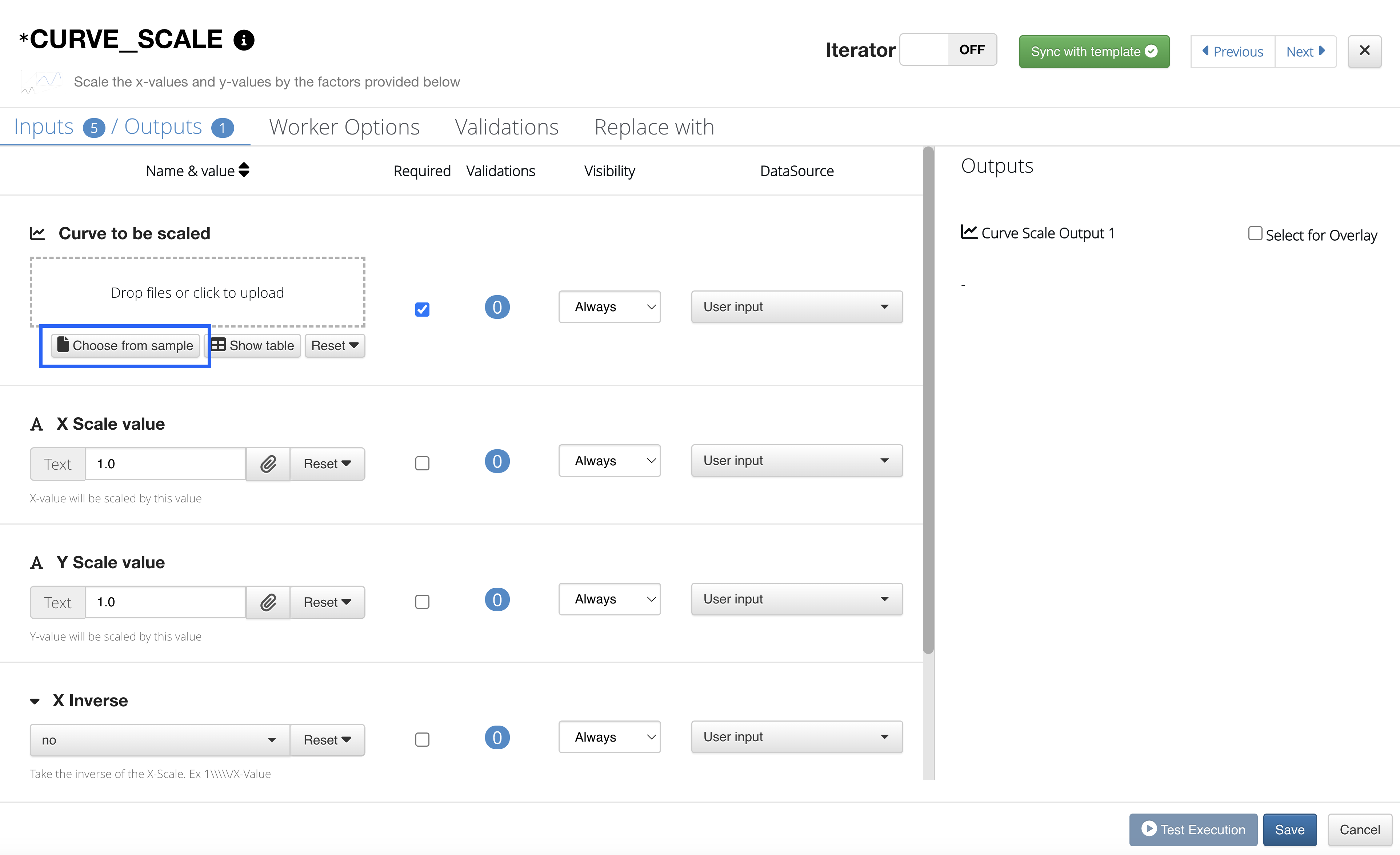
Similarly to adding via the START worker, we’ll pick our x and y ranges for our curve in the excel viewer.
Choose X and Y Range in Excel Viewer

Here is how our sample curve looks in the curve viewer.
Sample Curve
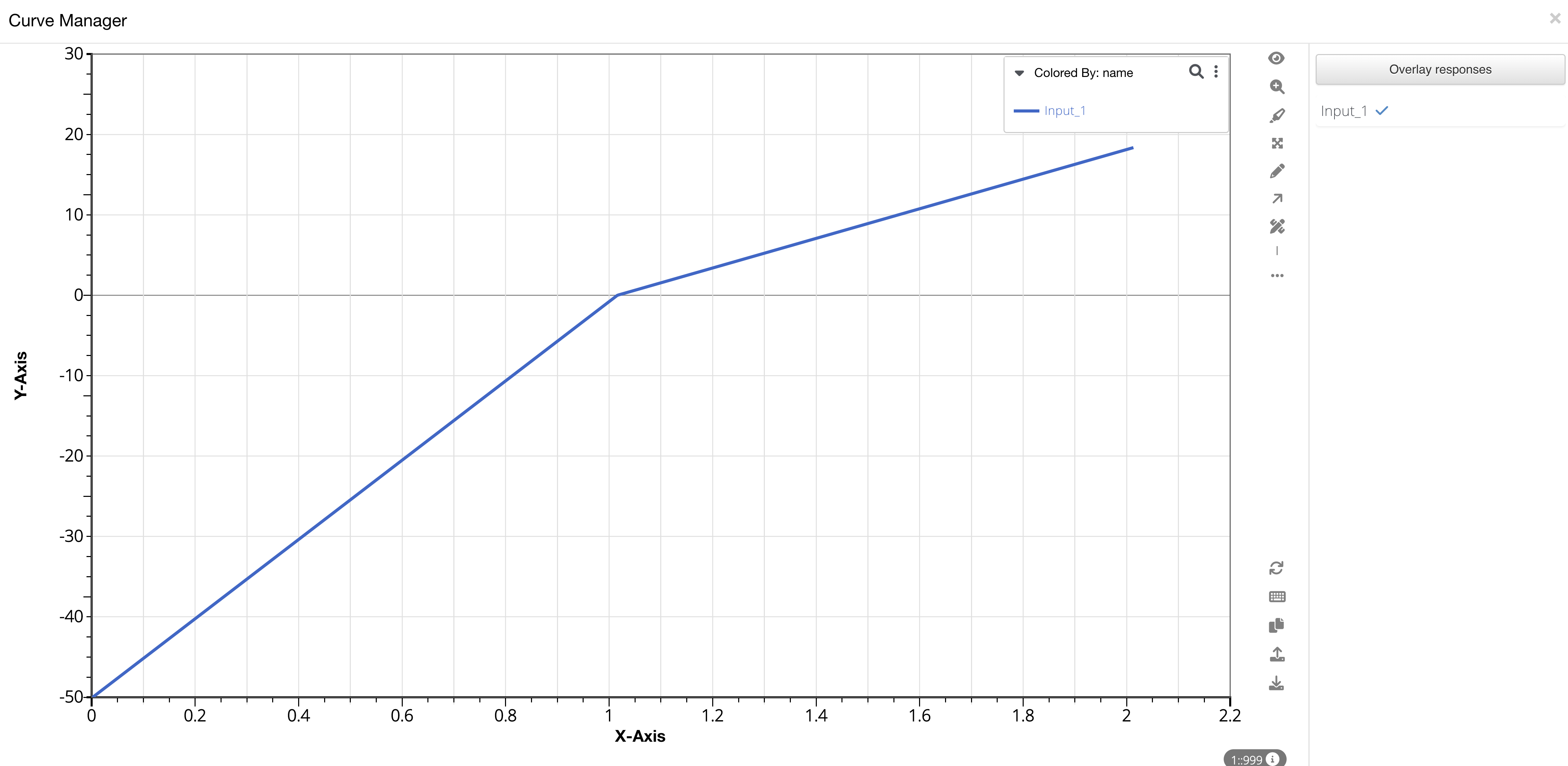
3.3. Generic Parser¶
Generic Parser helps us import data from our local files into worker inputs. Learn how to add workers to the canvas for configuration under Building and Configuring. For example, we can import data from a .txt file for our worker inputs.
Generic Parser Text Upload
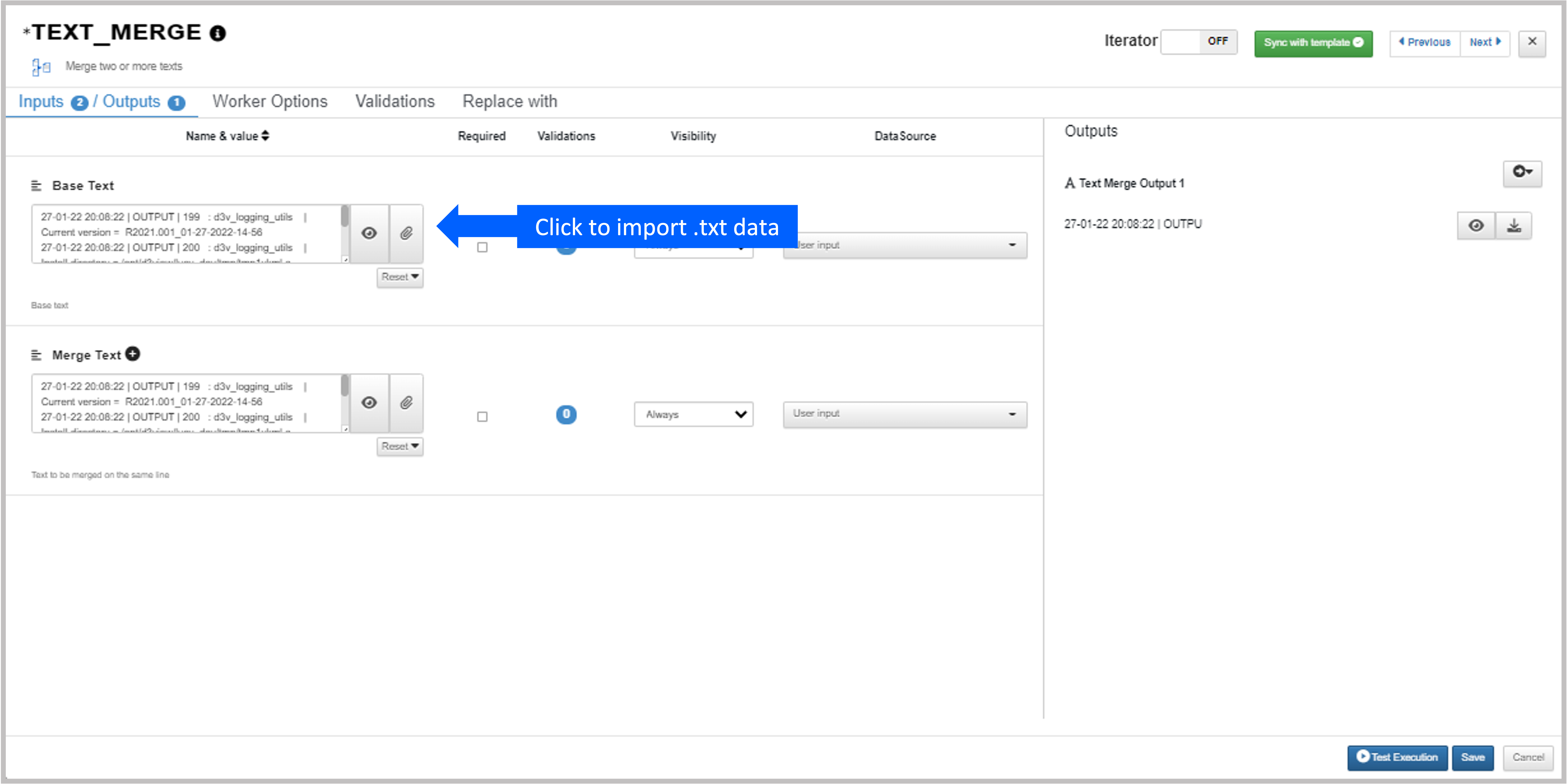
3.4. Import Workflow Files¶
You can import files from your computer to help create your workflow. Supported workflow files will have the extension .JSON if unpackaged or .D3ZIP if packaged with input data. (Learn how to export your workflow here.
Click on the import button at the top left, and choose a file from your computer. In the example below, a JSON file is imported. You can use your file to replace your current workflow or merge with it.
Import a JSON File as a Workflow
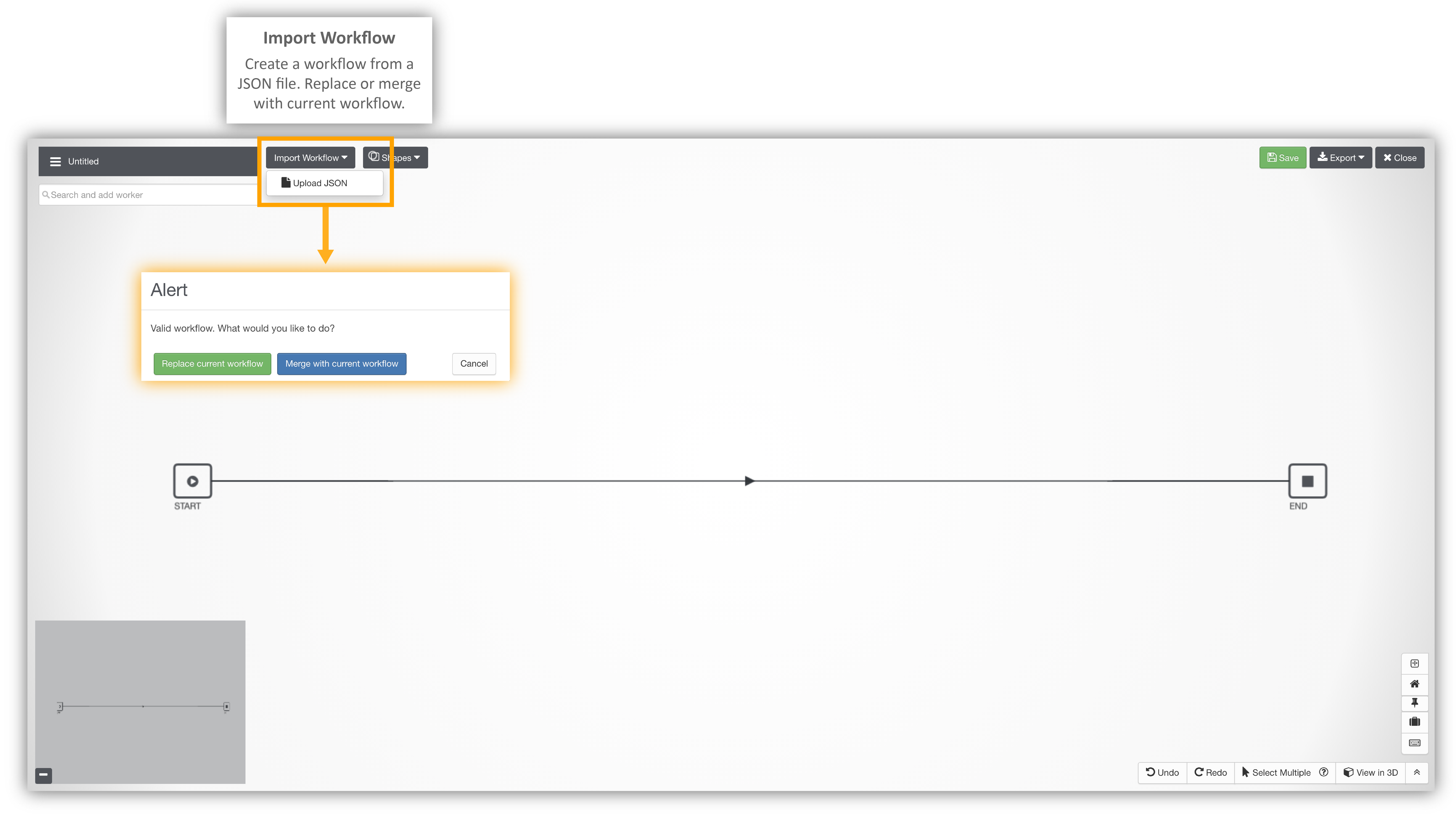
After choosing to merge or replace, your imported workflow should appear on your Workflow Timeline as shown here:
Imported Workflow
